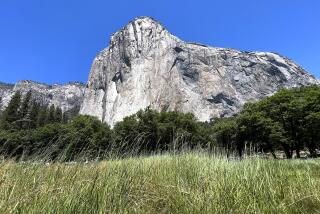The price of closing parks
- Share via
If you want to save money, there are easier ways to go about it than by closing scores of state parks. It’s surprising that Gov. Arnold Schwarzenegger thought otherwise back when he announced that most of the state’s 279 parks would close. Later, he amended that to 100.
But the list of specific parks never materialized, and now the governor is saying the number will be far lower -- possibly zero. A leaked memo written by lawyers for the Department of Parks and Recreation makes the reasons clear, outlining dozens of ways California could actually lose money by closing parks. We detailed some of the more obvious ones on this page in June, but the memo presents pitfalls we hadn’t even imagined. If an endangered species is harmed, the state has to answer to the feds. It has contracts with concessionaires -- food outlets, riding stables and so forth -- that might have to be honored. Organizations that have lent valuable articles for display might demand their return if they will not be displayed to the public. Land and cash donations to the parks system are sometimes conditioned on parks remaining open. Closure of beaches would probably need special permits to comply with the state’s Coastal Act.
The parks system must share in the cuts that virtually everyone in the state is suffering in one way or another. It’s ludicrous to suggest that recreation is more important than education or healthcare. Some “parks,” such as the California Mining and Mineral Museum in Mariposa, consist of a single building. The museum, which became part of the parks system 10 years ago, contains intriguing displays of mining equipment and gold, but if padlocking it for a year means saving teaching jobs or home health aides for the elderly, it’s a trade-off worth considering. The state will probably have to raise fees and trim educational programs at the parks.
The key phrase is “save money.” Parks that are expensive to maintain and patrol would remain that way whether or not their gates are open; the main difference is that a closed park cannot charge fees. It was always painful to contemplate being shut out of our parks. Now that appears to be a false economy as well.
More to Read
Sign up for Essential California
The most important California stories and recommendations in your inbox every morning.
You may occasionally receive promotional content from the Los Angeles Times.












